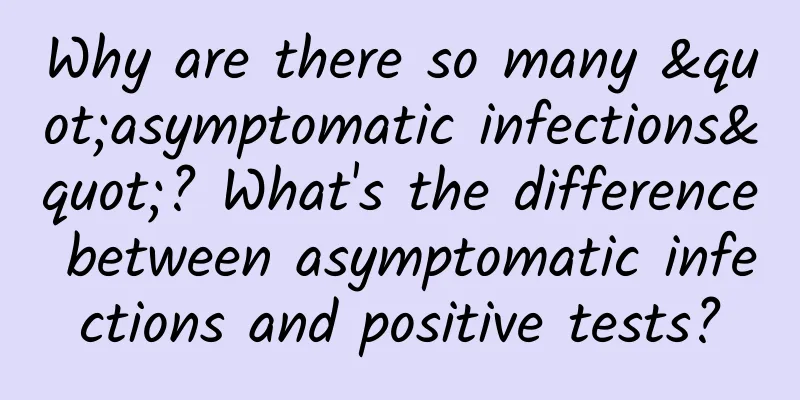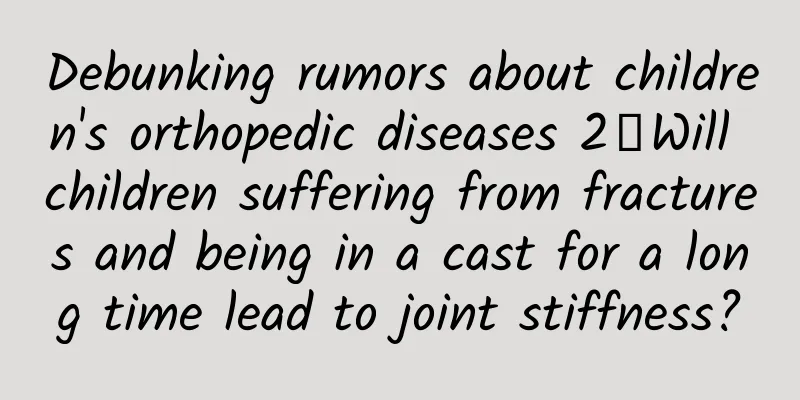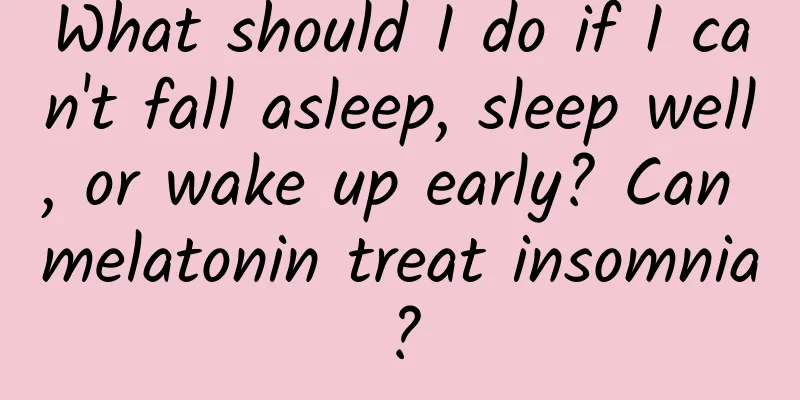Why are there so many "asymptomatic infections"? What's the difference between asymptomatic infections and positive tests?

|
As the weather gets colder, the COVID-19 outbreak has become more severe in various places recently. The number of confirmed cases rising every day makes people nervous. Among them, the number of newly added "asymptomatic infections" is in the tens of thousands, and many people are confused. What is the difference between "asymptomatic infection" and "positive"? Does "asymptomatic" mean nothing is wrong? NetEase Health has sorted out relevant information for everyone, let's take a look! What is the difference between “asymptomatic infection” and “positive”? Asymptomatic infected persons refer to those who test positive for the pathogen of the new coronavirus (including nasopharyngeal swabs, sputum, blood, and stool examinations, etc.) but have no relevant clinical manifestations, such as fever, dry cough, fatigue, sore throat, decreased sense of smell (taste), diarrhea, and other self-perceived or clinically identifiable symptoms and signs, and who have no imaging features of new coronavirus pneumonia on CT imaging. What we usually call positive generally refers to a positive nucleic acid test. The nucleic acid test value usually refers to the CT value. The CT value is the cycle threshold, which is related to the concentration of nucleic acid content in the sample. The smaller the CT value, the greater the viral load in the body. A CT value of the new coronavirus nucleic acid test less than 35 indicates a positive new coronavirus infection. Asymptomatic infected persons who test positive and have already developed symptoms, or who develop symptoms such as cough, fever, and fatigue after a period of observation, will be diagnosed as confirmed cases. Infected persons who do not show clinical symptoms but have lesions in lung CT scans can also be diagnosed as confirmed cases. The clinical severity of confirmed cases includes four types: mild, ordinary, severe, and critical. Therefore, it can be simply understood that the "positive" nucleic acid test includes "asymptomatic infections" and "confirmed patients", but "confirmed patients" in addition to being positive for nucleic acid also need to meet the diagnostic criteria of the diagnosis and treatment plan, that is, a positive virological test, and sometimes clinical symptoms or abnormal blood and imaging tests. Does “no symptoms” mean nothing is wrong? Is centralized quarantine necessary? At present, asymptomatic infected persons do not need special treatment, only centralized isolation and medical observation. During the centralized isolation and medical observation period, asymptomatic infected persons will undergo routine blood tests, CT imaging examinations and antibody tests according to the situation. If relevant symptoms or signs appear later and meet the diagnostic criteria for confirmed cases, they will be revised to confirmed cases and treated and managed as confirmed cases. "Asymptomatic" does not mean nothing is wrong. The transmission routes of asymptomatic infections are the same as those of confirmed cases, including direct transmission, aerosol transmission, and contact transmission. Although asymptomatic infections have no clinical symptoms, they carry the virus in their bodies. If they are not isolated in time, they may cause large-scale hidden infections. Therefore, after being tested and confirmed as an asymptomatic infection, you should actively cooperate with treatment under the guidance of a doctor in a timely manner to prevent more people from being infected. Why are there so many asymptomatic infections? As the novel coronavirus continues to mutate, the currently prevalent Omicron variant has become more contagious, its toxicity has been relatively weakened, and its clinical symptoms are relatively mild. In addition, the current vaccination coverage rate is high, and after vaccination, the body's immunity is enhanced, so the symptoms have not manifested. In addition, the disease control team quickly screened and discovered, so that some early infected people were quickly discovered and detected before they had time to show symptoms. These are the reasons for the increase in asymptomatic infections. Cold seasons are often the peak seasons for infectious diseases. Under the damp and cold conditions of winter, the human body's immunity is relatively low, and the low temperature environment is more suitable for the survival of the new coronavirus. Therefore, everyone must take good protection and pay attention to personal hygiene, and don't let the new coronavirus take advantage of it! Source: "Diagnosis and Treatment Plan for Novel Coronavirus Pneumonia (Trial Ninth Edition)", "Notice on Further Optimizing Novel Coronavirus Pneumonia Prevention and Control Measures and Scientifically and Accurately Carrying out Prevention and Control Work" |
>>: APA: The more social media users use, the more psychological stress they experience
Recommend
What is the difference between long beans and green beans? How to stir-fry green beans
French beans are also known as green beans, long ...
What should a breastfeeding mother do if she has a fever?
Fever is a common symptom of a cold. Normally, we...
I just had my period and there was blood in my vagina
What happens if there is blood in the leucorrhea ...
After being bombarded with "Cells at Work!", you should know what coagulation waterfall is, right?
Author: Lin Lisha (Kunming Institute of Botany, C...
National Hypertension Day丨Control your blood pressure and don’t let it “crush” your health!
Author: Wang Changyuan, Chief Physician, Xuanwu H...
Active Nestin
Many people probably don’t know much about active...
After taking acarbose, I have diarrhea and more flatulence. Can I eat less and not take medicine?
A friend with diabetes told Huazi that he was tak...
Is frequent urination a sign of pregnancy?
There are two easiest ways for a woman to determi...
Pictures of normal nipples
Before puberty, girls' nipples will protrude ...
How to prevent allergic rhinitis in autumn? Is allergic rhinitis closely related to heredity?
It is autumn now, the air becomes dry, and the te...
The fastest way to naturally enlarge your breasts
Small ball push-ups - target the pectoralis major...
Celebrities were fined for endorsing weight loss products. Don’t buy weight loss products with this kind of ingredients!
Recently, the news #Jing Tian was punished for il...
Introduction to postpartum breast enhancement methods
When women perform breast augmentation after chil...
Small nostril woman
According to legend, the nose represents a person...









